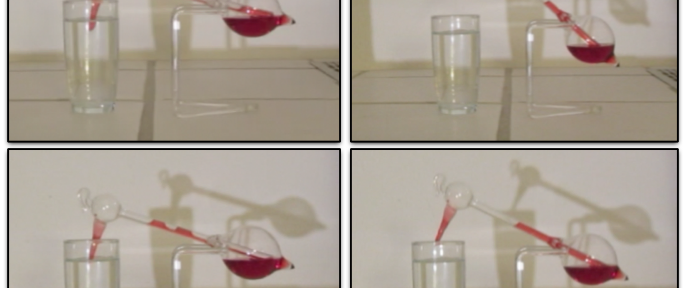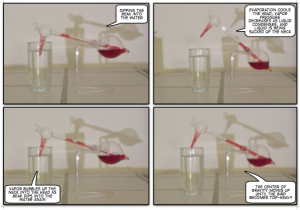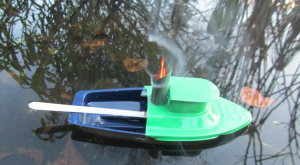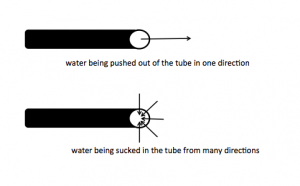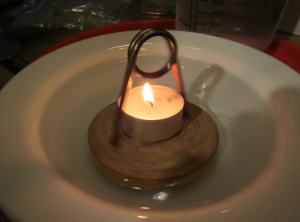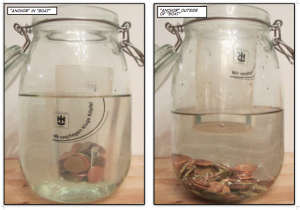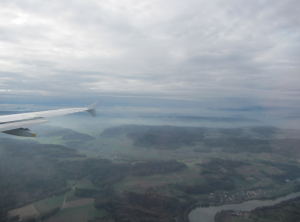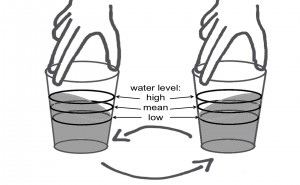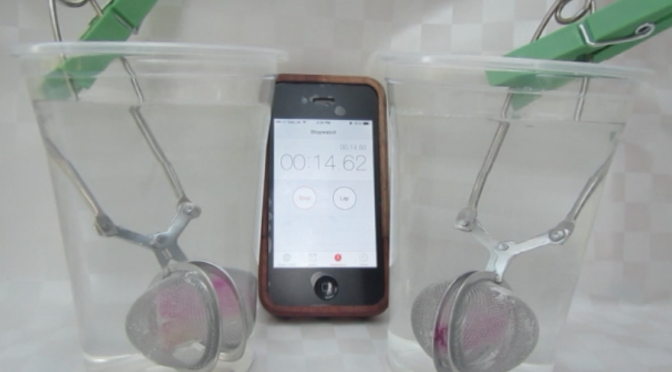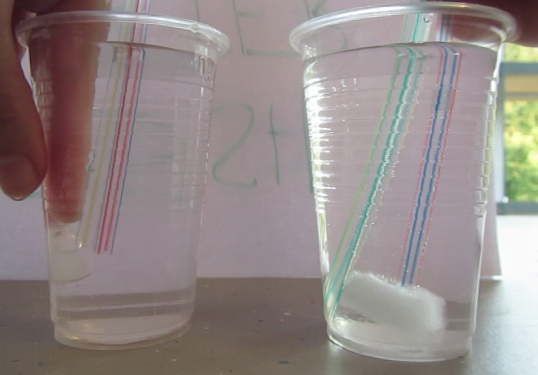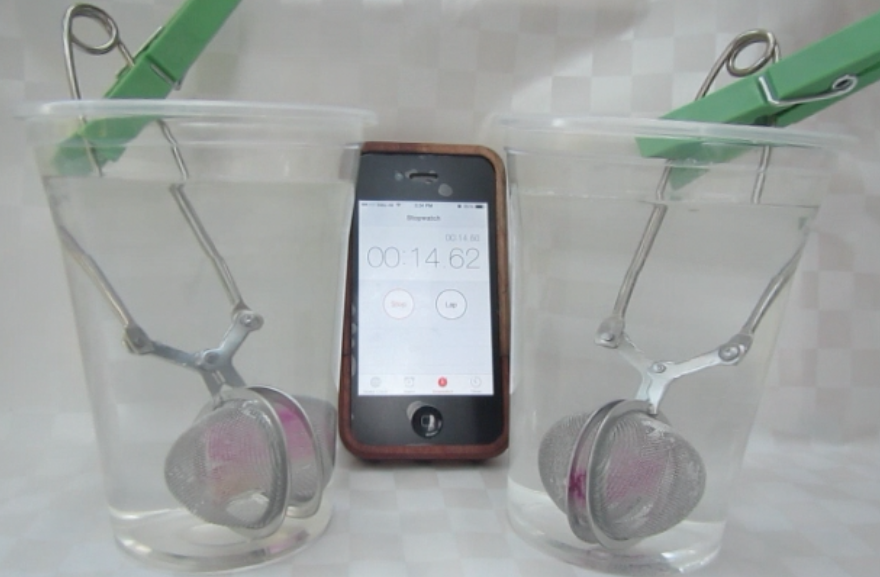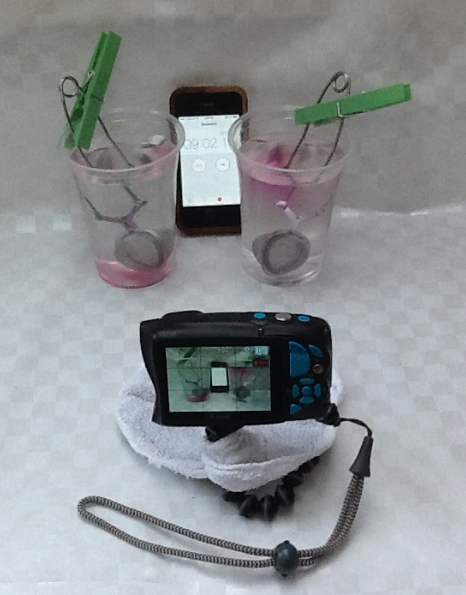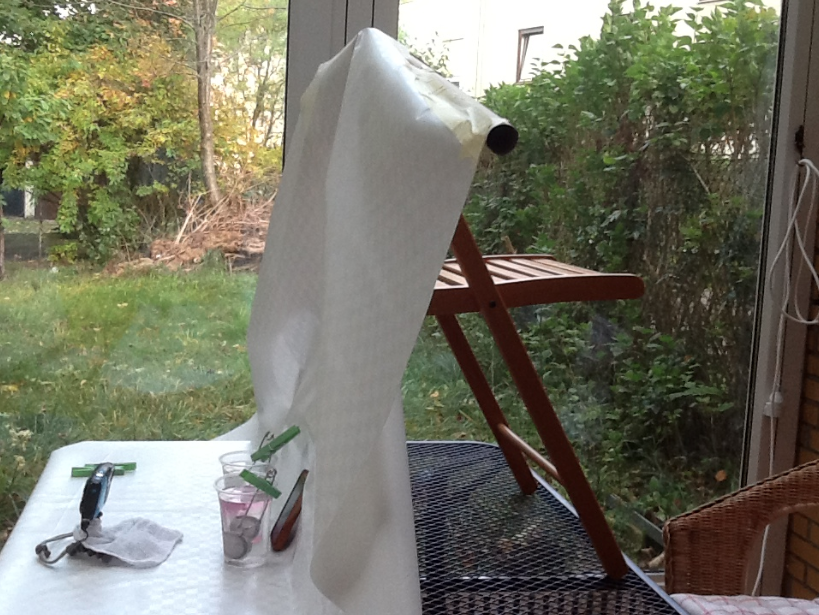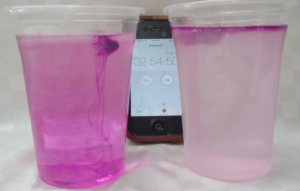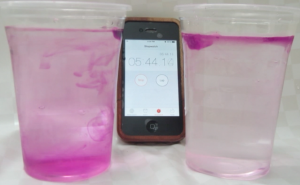Groundwater dynamics in the kitchen.
This activity is suitable for young children who wonder where the tap water comes from. All you need is some sand, an empty toilet paper roll, and some water.
First, you need to build your well. You could dig a hole into a sand-filled bucket and then put in the toilet paper roll, or you can just set the roll into a bucket and then fill sand around it (which is what I did).
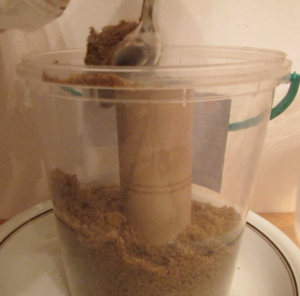
Put your empty toilet paper roll in a larger vessel and fill the space around the roll with sand.
Next, you “let it rain” on the sand to replenish the ground water.
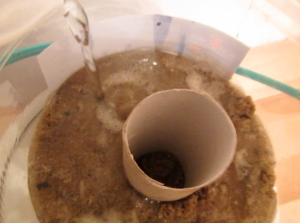
Let it “rain” to replenish the groundwater.
After a while, water starts collecting in the well, and the water level rises. It looks pretty yucky at first, clearly the sand I got from the playground is pretty dirty.
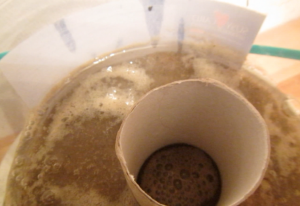
After a while, the water starts rising up in the well.
Things to discuss:
- How will different sands / soils influence the water quality in your well?
- What could you do to improve the water quality?
- What effect will torrential downpours (like what I did above) have on the water quality compared to nice and slow summer rain?
And then if you want to go there, you could discuss pollutants in the soil that will have an effect on water quality etc..
And you could actually try different sands / soils on water that you either color, or in which you dissolve other things, or in which you suspend things. But I was too lazy to do this for this post. But I might come back to this experiment for nicer pictures in natural light, but you might have to wait for that until next summer :-(
I really like this demo, it is quick and easy and nice if you don’t feel like digging a massive hole in your garden (which I did not).
